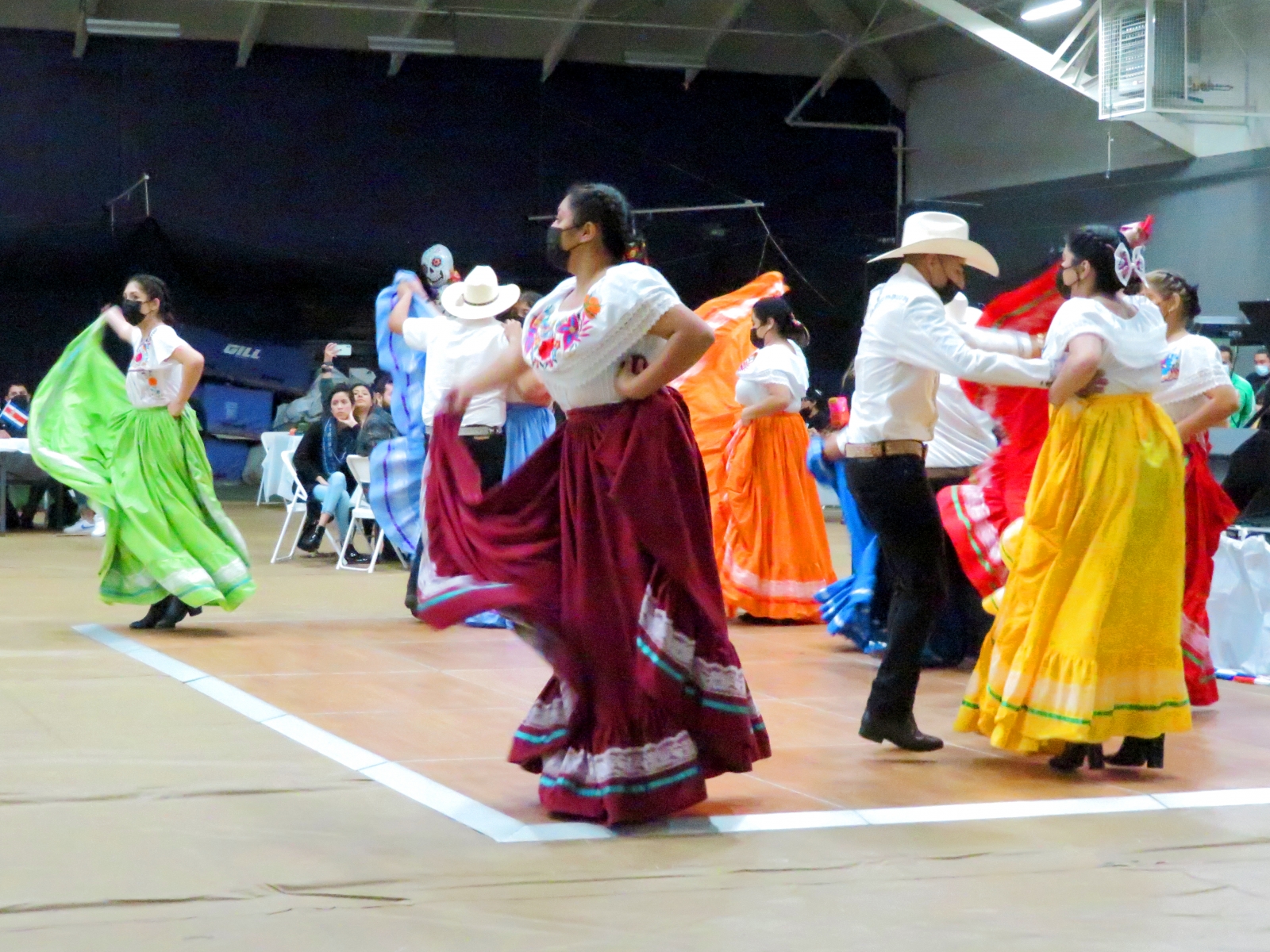Día de Celebración: Linfield students and locals come together to celebrate Hispanic Heritage Month
October 28, 2021
“It is a celebration of unity, to show all parts of identity as Hispanic/LatinX, and to show that we matter and that we belong in this country and the world. This event represents my pride of being Hispanic” said Linfield University sophomore Ivan Galicia Sixto.
Linfield University Latinx Adelante (LULA) hosted Dia de Celebración on Sunday, Oct. 17, in the Rutschman Field House to honor Hispanic Heritage Month. The annual event is free and intended as a way for students, staff, and community members to come together and celebrate Hispanic culture.
Many eager families and community members were excited to attend this year, as it had been put on hold for two years due to the COVID-19 pandemic. The event is made possible by student volunteers who plan, set up, work, perform, and clean up.
“I was excited and was looking forward to participating in this event as this was going to be my first year attending,” Galicia said. “I was proud to be around so many LatinX students like me to share our values and rich culture as a group. I was nervous because I didn’t know what the outcome was going to be. I wasn’t expecting so many families to show up that we ran out of tacos and pupusas!”.
The Woodburn High School Mariachi band opened the stage. Wearing their maroon charro outfits, a type of traditional Mexican formalwear, the Mariachi played several instruments such as trumpets, guitar, flutes, and a bass guitar.
After the band left the stage, the Huehca Omeyocan Aztec dancers performed. The men played music using drums, wind instruments, and conch shells while women in colorful traditional attire danced for the crowd. Long feathers on their heads waved and fluttered for the audience. They also wore Aztec bells, or ayoyotes, around their ankles to make noise as they moved, filling the room with sound.
Following a performance by Linfield sophomore student Mara Cruz-Trapala, who sang “No Me Queda Más” by Selena, it was time for Linfield dancers to shine. Linfield students performed their baile folklorico, or folkloric dance, in a series of three songs. The women wore long, full, and colorful dresses that they swished around to the music.
Parents and community members stood up on their feet to express their support for the students. In their last performance, baile folklorico dancers pulled friends and family from the audience to join them on the dance floor.
“In that moment I felt so immersed in the culture–I was no longer an individual but a part of the celebración, and I couldn’t help but dance and smile. I felt so welcomed and connected with everyone there,” said senior Kim Summerton.
To end the event, Dina y Los Rumberos played cumbias. Students, staff and parents rushed the dance floor.
During the performances, people had access to an array of traditional hispanic meals. Tacos, pupusas, tamales, pozole verde, pozole rojo, rice, and beans were only some of the offerings to pick from.
That was in addition to the tempting drinks and desserts that were offered such as horchata, flan, pan dulce, platanos asados, traditional candies, and many others.
“The warmth from each person at the food stations made me feel so welcomed and helped encourage me to try new foods and learn more about them,” Summerton said. “Coming from a small, rural town, I had never tried most of the foods at the celebración, but I’m so glad I was able to.”
Later that evening, a piñata was busted open with different types of candy as Linfield students and children took turns swinging with a stick. The breaking of a piñata at parties or other events is a tradition in many hispanic cultures.
“As a minority group in the US, we don’t often get to celebrate the unity that we share as Hispanics,” Galicia said. “Through this event, we were able to share all aspects that identify us as Hispanic: food, music, dance, art, and language.”
Hispanic Heritage Month is celebrated annually in the United States to honor and recognize the contributions and influences that Hispanic Americans have brought to the history, culture, and achievements of the United States through time.
It was first started as a Hispanic Heritage Week in 1968 under President Lyndon Johnson, and was then expanded by President Ronald Reagan in 1988 from Sept. 15 to Oct. 15.
“To me, Hispanic Heritage Month is a way of celebrating the rich mixture of the different types of Hispanics out there,” Galicia said.

